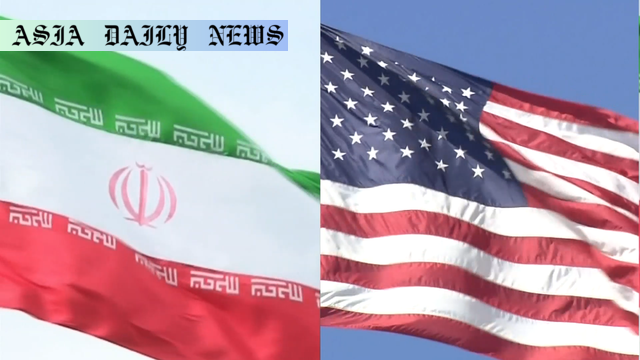Iran talks: The New York Times reports on potential Iranian acceptance of Trump’s offer, focusing on key nuclear and ceasefire issues.
The New York Times reports that Iran may accept Donald Trump’s call for talks.
The discussions will address a ceasefire with Israel and Iran’s uranium enrichment program.
Trump hinted at possible military action but left the decision ambiguous.
High-level US officials are prepared for prompt negotiations if Iran agrees to terms.

The Potential for Diplomatic Progress: Iran and the United States
The New York Times recently revealed that Iran might accept President Donald Trump’s offer to engage in diplomatic talks. This development marks a potentially significant shift in the ongoing tensions between Iran and the United States. The proposed discussions, highlighted by a senior Iranian foreign ministry official on condition of anonymity, aim to address highly contentious issues like the Iranian nuclear program and the establishment of a ceasefire with Israel.
The urgency surrounding these potential talks is underscored by President Trump’s ambiguous statements regarding potential military actions against Iran. While speaking on this issue, Trump remarked, “I may do it, I may not do it. I mean nobody knows what I’m going to do.” His unpredictability appears to be a deliberate tactic to heighten pressure on Tehran, compelling them to come to the negotiating table. Additionally, reports indicate that if Iran agrees to abandon uranium enrichment activities, pivotal high-level discussions could occur as early as this week.
The Key Stakes: Nuclear Activities and Regional Stability
At the heart of these speculated negotiations lies the Iranian nuclear program, a subject of great concern for both the U.S. and its allies. The Trump administration has long criticized Tehran for its uranium enrichment initiatives, deeming them a pathway to nuclear proliferation despite Iran’s assurances that these efforts are for peaceful purposes. The talks would also likely focus on strengthening regional stability, particularly regarding ongoing tensions between Iran and Israel. A ceasefire in this context would represent a monumental step toward alleviating decades-old hostilities in the Middle East.
Moreover, the involvement of US officials such as Trump’s special envoy Steve Witkoff or Vice President JD Vance underscores the gravity of these talks. With the current geopolitical climate as tense as it is, the successful navigation of this meeting could set a precedent for improved relations between the two adversaries. However, any progress will require significant concessions on both sides, particularly Iran’s willingness to dismantle parts of its nuclear program and the U.S.’s capacity to offer actionable assurances.
The Broader Implications of U.S.-Iran Negotiations
If the two nations successfully engage in dialogue, this could have profound implications not just for their bilateral relations but also for the global political landscape. The Trump administration, which withdrew from the Iran nuclear deal in 2018, has faced criticism for its approach toward Tehran. A successful meeting might redeem some of this criticism, showcasing the administration’s capacity for pragmatic diplomacy. On the other hand, for Iran, such engagement could help resolve its economic woes exacerbated by years of crippling sanctions imposed by the U.S. and its allies.
That said, the stakes are extremely high. Any failure in negotiations could further escalate tensions and lead to punitive actions, including military engagement. Both countries are entering these proceedings with considerable caution and high expectations from their constituencies. For international observers, the potential for renewed U.S.-Iran diplomacy offers a glimmer of hope amidst the otherwise tumultuous geopolitical climate of 2023.
Commentary
The Complex Dynamics of U.S.-Iran Relations
The potential for renewed discussions between Iran and the United States is not just a newsworthy development but also a significant moment for international diplomacy. Given the strained history between these two nations, characterized by decades of mutual distrust and geopolitical posturing, this diplomatic opening could pave the way for profound regional and global implications. However, the complexity of the issues at hand cannot be understated.
Trump’s approach to Iran has been a mixture of pressure and unpredictability. While his withdrawal from the JCPOA (Joint Comprehensive Plan of Action) in 2018 was criticized for dismantling years of multilateral work, his willingness to engage Iran at this moment demonstrates a certain flexibility in his approach. Tehran, on the other hand, has been grappling with internal economic struggles and external isolation brought about by U.S.-led sanctions. In this context, the opening of talks may reflect a shared understanding that escalation—be it through sanctions or military means—is neither sustainable nor beneficial for either side.
Challenges and Opportunities Ahead
Of course, the journey to a successful negotiation will be rife with challenges. Iran’s nuclear ambitions have long been a lightning rod for tension, and convincing Tehran to abandon its enrichment program will require significant concessions from the U.S., perhaps in the form of sanction relief or diplomatic assurances. Moreover, while the United States may focus on nuclear-related concerns, Iran will push for discussions on broader regional issues, such as security arrangements with Israel and its role in regional conflicts.
While the New York Times story offers a glimpse of optimism, it is important to temper expectations. Years of mistrust cannot be easily erased through a single high-level meeting, no matter how well-intentioned. However, the fact that both sides appear willing to engage—at least tentatively—is a positive sign in an era of intensifying global polarization. Hopefully, these talks will be the beginning of a more stable chapter in U.S.-Iran relations.


